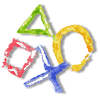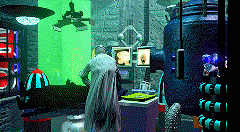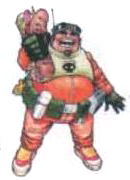Brains in Planes: Difference between revisions
DansFriend (talk | contribs) No edit summary |
DansFriend (talk | contribs) No edit summary |
||
| (9 intermediate revisions by the same user not shown) | |||
| Line 1: | Line 1: | ||
[[File:BrainsInPlanes-CGI-2.PNG|thumb|Brains in Planes.]] [[File:BrainsInPlanes-CGI-5.PNG|thumb|A brain being removed.]] | [[File:BrainsInPlanes-CGI-2.PNG|thumb|Brains in Planes.]] [[File:BrainsInPlanes-CGI-5.PNG|thumb|A brain being removed.]] | ||
'''''Brains in Planes''''', also known as '''''Headrush''''', is a cancelled 3D racing video game that was being developed by [[Millennium Interactive]] in 1996. The game was due to be released on the PlayStation as well as Windows 95.<ref name="Edge">{{Cite|published=August 1996|title=An audience with... Millennium|newspaper=Edge, Issue 35|publisher=Future Publishing|pages=22-26|url=https://archive.org/details/Edge_Gaming/Edge%20Gaming%20Magazine%20035/page/n18/mode/2up}}</ref> Several previews of the game were published in magazines and on CDs featuring concept art and CGI. | '''''Brains in Planes''''', also known as '''''Headrush''''', is a cancelled 3D racing video game that was being developed by [[Millennium Interactive]] in 1996 and up to Q1 1997. The game was due to be released on the PlayStation as well as Windows 95.<ref name="Edge">{{Cite|published=August 1996|title=An audience with... Millennium|newspaper=Edge, Issue 35|publisher=Future Publishing|pages=22-26|url=https://archive.org/details/Edge_Gaming/Edge%20Gaming%20Magazine%20035/page/n18/mode/2up}}</ref> Several previews of the game were published in magazines and on CDs featuring concept art and CGI. According to a ''[[wikipedia:Frogger (1997 video game)|Frogger]]'' development report, development on ''Headrush'' was paused in March 1997.<ref name="frogger">{{Cite web|url=https://archive.org/details/Frogger-Hes-Back-source-code|site=Internet Archive|quote=Due to the pausing of Headrush Leavon Archer will be helping out with the artwork on the project. Tim Closs will also be available to spend some time helping out with the Playstation version.|author=Frogger DevRep 14-3-97.doc|title=Frogger: He's Back! source code|published=September 27, 2023|retrieved=September 27, 2023}}</ref> | ||
==Gameplay== | ==Gameplay== | ||
The game was going to have at least six circuits with multiple routes, shortcuts and horizontal and vertical hazards such as pedestrians, police vehicles and other moving scenery. There were going to be multiplayer, tag, battle and time trial game modes.<ref name="Edge"/> | The game was going to have at least six circuits with multiple routes, shortcuts and horizontal and vertical hazards such as pedestrians, police vehicles and other moving scenery. There were going to be multiplayer, tag, battle and time trial game modes.<ref name="Edge"/> Attempting to cheat during the races would have resulted in the activation of a self-destruct mechanism, which would have permanently removed the plane and the brain from the circuit.<ref name="PCSpiel">{{Cite web|url=https://archive.org/details/PCS1196|title=PC Spiel 11/96 CD-ROM|newspaper=PC Spiel 11/96|publisher=Tronic-Verlag GmbH|published=November 1996}}</ref> | ||
==Plot== | ==Plot== | ||
In a 23rd century dystopia of peace, harmony and total boredom, outlaw racers get their kicks from racing ultra-fast planes around the cities of the future. However, because the human body can't withstand the extreme G-force, the racers must remove their brains and plug them into the craft's circuitry.<ref name="Edge"/> | In a 23rd century dystopia of peace, harmony and total boredom, outlaw racers get their kicks from racing ultra-fast planes around the cities of the future. However, because the human body can't withstand the extreme G-force, the racers must remove their brains and plug them into the craft's circuitry while the rest of their bodies are artificially kept alive.<ref name="Edge"/><ref name="PCSpiel"/> | ||
==Development== | |||
[[File:BrainsInPlanes-Racer-Art.png|Art by Philip Bond.|right|thumb]]The game was being produced by [[Kevin Bull]].<ref name="PCSpiel"/> The art style of the game was inspired by comics like [[wikipedia:Judge Dredd|Judge Dredd]] and [[wikipedia:Tank Girl|Tank Girl]]. The studio hired British comic book artist [[wikipedia:Philip Bond|Philip Bond]], who worked on said comics, to design the game's look.<ref name="PCSpiel"/> Bond designed the characters, each with their unique ship, as well as some of the game's cities.<ref name="PCSpiel"/> | |||
In late 1996, the first race track of the game was still being tested on [[wikipedia:Autodesk Alias|Alias]], but the team felt confident that their 3D libraries would deliver "an awesome visual experience."<ref name="Edge"/> All the planes were to be generated on [[wikipedia:Silicon Graphics|SGI]] machines, and were to be tracked in-game by a selection of three third-person camera positions. Anything that could obstruct the player's view was going to be rendered in transparent polygons, so vision would remain unimpaired.<ref name="Edge"/> The crudity of depth shading was to be avoided by constructing 3D maps in order to limit the viewable distance from any point on the map.<ref name="Edge"/> Graphical effects were to include a particle system allowing for spectacular explosions, fountains, exhaust streams; multiple light sources and lens flare; and a dazzling chrome effect to be achieved through the use of environment mapping within the graphics API.<ref name="Edge"/> | |||
By March 1997, development on the game was paused. This freed up people working on the game, such as [[Leavon Archer]] and [[Tim Closs]], to help out on other projects, including ''Frogger''.<ref name="frogger"/> | |||
==Gallery== | ==Gallery== | ||
===Artwork=== | ===Artwork=== | ||
<gallery> | <gallery> | ||
BrainsInPlanes-Plane-Artwork.png|Art by Philip Bond. | |||
BrainsInPlanes-Plane-Artwork.png | |||
</gallery> | </gallery> | ||
===Renders=== | ===Renders=== | ||
| Line 23: | Line 27: | ||
[[Category:Games]] | [[Category:Games]] | ||
[[Category:Unreleased games]] | [[Category:Unreleased games]] | ||
==Navigation== | |||
{{Projects}} | |||
{{DISPLAYTITLE:''Brains in Planes''}} | {{DISPLAYTITLE:''Brains in Planes''}} | ||
Latest revision as of 22:23, 27 September 2023
Brains in Planes, also known as Headrush, is a cancelled 3D racing video game that was being developed by Millennium Interactive in 1996 and up to Q1 1997. The game was due to be released on the PlayStation as well as Windows 95.[1] Several previews of the game were published in magazines and on CDs featuring concept art and CGI. According to a Frogger development report, development on Headrush was paused in March 1997.[2]
Gameplay
The game was going to have at least six circuits with multiple routes, shortcuts and horizontal and vertical hazards such as pedestrians, police vehicles and other moving scenery. There were going to be multiplayer, tag, battle and time trial game modes.[1] Attempting to cheat during the races would have resulted in the activation of a self-destruct mechanism, which would have permanently removed the plane and the brain from the circuit.[3]
Plot
In a 23rd century dystopia of peace, harmony and total boredom, outlaw racers get their kicks from racing ultra-fast planes around the cities of the future. However, because the human body can't withstand the extreme G-force, the racers must remove their brains and plug them into the craft's circuitry while the rest of their bodies are artificially kept alive.[1][3]
Development
The game was being produced by Kevin Bull.[3] The art style of the game was inspired by comics like Judge Dredd and Tank Girl. The studio hired British comic book artist Philip Bond, who worked on said comics, to design the game's look.[3] Bond designed the characters, each with their unique ship, as well as some of the game's cities.[3]
In late 1996, the first race track of the game was still being tested on Alias, but the team felt confident that their 3D libraries would deliver "an awesome visual experience."[1] All the planes were to be generated on SGI machines, and were to be tracked in-game by a selection of three third-person camera positions. Anything that could obstruct the player's view was going to be rendered in transparent polygons, so vision would remain unimpaired.[1] The crudity of depth shading was to be avoided by constructing 3D maps in order to limit the viewable distance from any point on the map.[1] Graphical effects were to include a particle system allowing for spectacular explosions, fountains, exhaust streams; multiple light sources and lens flare; and a dazzling chrome effect to be achieved through the use of environment mapping within the graphics API.[1]
By March 1997, development on the game was paused. This freed up people working on the game, such as Leavon Archer and Tim Closs, to help out on other projects, including Frogger.[2]
Gallery
Artwork
Renders
References
- ↑ 1.0 1.1 1.2 1.3 1.4 1.5 1.6 An audience with... Millennium in Edge, Issue 35, page(s) 22-26. Published August 1996 by Future Publishing.
- ↑ 2.0 2.1 "Due to the pausing of Headrush Leavon Archer will be helping out with the artwork on the project. Tim Closs will also be available to spend some time helping out with the Playstation version." — Frogger DevRep 14-3-97.doc, Frogger: He's Back! source code on Internet Archive. Published September 27, 2023. Retrieved September 27, 2023.
- ↑ 3.0 3.1 3.2 3.3 3.4 PC Spiel 11/96 CD-ROM in PC Spiel 11/96. Published November 1996 by Tronic-Verlag GmbH.
| |||||||||||







